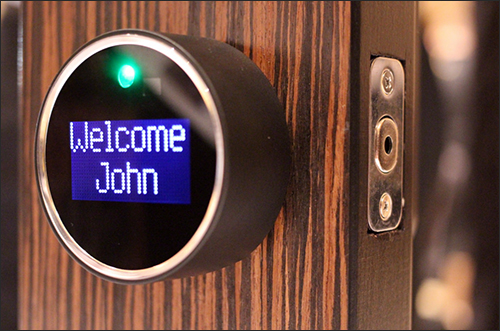Consumers are increasingly aware of the value of the personal data they share via smart-home devices and platforms, and are wary of the security robustness of those systems, according to a survey that Intel Security commissioned last summer.
In July 2015, Intel Security hired Vanson Bourne, an independent market research provider specializing in the technology sector, to interview 9,000 consumers—consisting of 2,500 from the United States, 1,000 from the United Kingdom, 1,000 from France, 1,000 from Germany, 1,000 from Brazil, 1,000 from India, 500 from Canada, 500 from Mexico and 500 from Australia—regarding topics related to smart-home technology.
Most respondents felt that smart-home technology is on a path to ubiquity, with 77 percent saying that by 2025, it will be as widely used as smartphones are today.
However, 66 percent said they were very concerned about the security of their home being compromised by cybercriminals, while 92 percent said they are concerned about the security of their personal data that is collected and shared via smart-home platforms. Seventy-five percent of respondents worried about the prospects of relying on and managing passwords to secure their smart homes, and many said they would prefer using biometrics security methods instead. Fifty-four percent would prefer fingerprints, while voice recognition and eye scans were the top choice for 46 and 42 percent, respectively.
Dollars for Data
When dealing with a trusted vendor, 54 percent of the surveyed consumers would gladly provide personal or behavioral data in exchange for direct reimbursement, while 70 percent said they think companies should at least offer coupons and discounts to customers in return for data about device usage. Millennials were the demographic most open to exchanging personal data or data related to their behaviors, collected via smart-home devices.
A 2014 survey conducted by Acquity Group showed a similar trend among consumers’ attitudes around personal data being collected by wearable devices and connected vehicles, although the Intel Security survey indicated that consumers might be even more willing to barter data collected in their homes. Forty percent of the 2,000 consumers whom Acquity Group surveyed in 2014 said they would share data with retailers or brands in exchange for discounts or value-added information.
Optimizing the Offerings
A think tank called The Atlantic Council released a 12-page report today—written by security experts and technologists from Intel, supply chain software security provider Sonatype and The Atlantic Council’s Cyber Statecraft Initiative. The authors listed the many benefits, both to individuals (financial savings) and to society in general (energy savings), that smart-home technology could unlock. But the report also laid out a chilling, imagined future in which the failure of manufacturers to build robust security protections into products could turn the smart, controllable home into a cyber-haunted domicile in which hackers controlled occupants’ every move.
Though hyperbolic, the dystopian future the authors describe sets up a more practical discussion and list of best practices though which smart-home manufacturers can integrate smart security tools into products while also garnering competitive advantage in the marketplace. The full report is available here.
But integrating security features is only part of the key to wider smart-home adoption, contends Rafi Zauer, head of marketing for smart home integration provider Essence. His firm sells a proprietary smart-home security device-management platform, known as WeR@Home Smart Living, which can also control ZWave smart-home devices, as well as devices that communicate over alterative protocols, such as the IPv6-based Thread protocol, via application programming interfaces (APIs).
In addition to improving data security, Zauer says, vendors must also start focusing on partnering with utilities and telecommunications providers to bring smart-home platforms to a wider audience—not just technophiles and other early adopters. Solutions must be more affordable and simple to operate for any homeowner, he adds, noting, “In the end, we want our customers’ customers to not have to do any custom integration.”
While telecommunications, insurance or utility providers are well positioned to integrate smart-home products and services into their existing offerings, Zauer believes consumers would feel more comfortable if those providers teamed up with other firms that are experts in security systems or energy-management platforms.
In addition, price points for smart-home offerings must fall significantly, Zauer says, citing two Essence customers that are selling Internet-based home security systems for as little as $250 in hardware costs and as little as $8 in monthly service subscription fees.
Finally, Zauer says, an important hurdle to adopting smart-home technologies is the need for consumers to learn new habits, and how to interact with new systems in their homes. “Until five or six years ago, we never thought about our home thermostats. But now, they can be the focal point of a smart home,” he states. “Or look at smart TVs, which have an operating system that needs to be upgraded. This never happened with TVs in the past. We’re trying to bridge the gap between consumer desire to connect with everything, on one hand, and on the other hand, not making life too difficult.”



